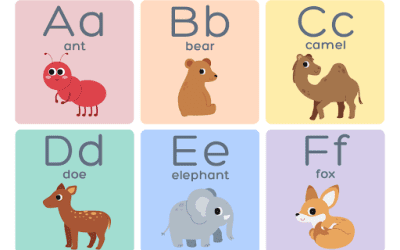In the United States, algebra is seen as the gateway course to higher-level math courses and, in some cases, even college. It also plays a crucial role in many areas of study, including science, engineering, and finance. Since this is usually the first encounter with abstract mathematical thinking, students often experience confusion and uncertainty. Here are four common misconceptions students have about algebra and how publishers can help to address these misunderstandings.
1. Not Connecting “Algebra” With Their Prior Math Learning
Many students arrive at their first algebra class with the preconceived notion that algebra is a difficult subject that is unrelated to any math they have done in the past. The name alone can be daunting. But publishers know that these students have been thinking algebraically since they were recognizing and describing patterns in kindergarten. They know that these students have been using inverse operations and finding unknown values for years. True algebra integrates the use of variables into these tasks to make math more versatile. So making students aware of these similarities and deliberately connecting this new notation to previously-learned concepts can help eliminate some of the misconceptions that students initially bring into the algebra classroom.
2. Confusing the Variable x With the Operation x
In elementary and middle school, students are taught to think that “x” means to multiply two numbers together. However, once they reach algebra, “x” is introduced as a variable. Students may wonder, “Why does the italicized letter suddenly mean something different?” This becomes especially confusing when solving algebraic problems by hand. Since there is no stylized difference between x as a variable and x as an operation, some students may misinterpret the variable x to indicate multiplication with the following term.
There are things publishers can do to make it easier to understand the differences. For example, they can use different colors or symbols to represent the variable x and operations using x. Additionally, publishers can emphasize that parentheses or the symbol “∙” are used to indicate multiplication in upper-level mathematics.
3. Treating Unlike Terms as if They Are Like Terms
One of the most common misconceptions students have about algebra is that they believe 5x + 4 equals 9x. It is understandable how students might simplify this expression based on their prior knowledge of adding integers, but once again, they fail to recognize x as a variable term. Since the second term only has a numeric part, 5x and 4 are not like terms, so they cannot be combined into a single term.
Educational publishers can provide opportunities for students to substitute random values for x and consequently see that the expressions are not equivalent. Discussion prompts around this misconception will also help students understand how to combine unlike terms correctly. They can also provide many step by step visual aids and examples to help students battle their misconceptions.
4. Interpreting Variables as Constants
When students first start solving algebraic equations, it may be difficult for some to grasp that a variable is actually variable. Often, this results from a lack of understanding that the x itself merely represents an unknown value that can be determined using the other information in the equation. This misconception is further highlighted when examining equations that contain more than one variable. For example, if x + y = 7, x equals 5 when y equals 2. However, this is not the only solution. There are an infinite number of solutions for x and y. This can be demonstrated by graphing a linear function that will show the solution not to be a singular point.
Publishers must provide examples that show how variables can change based on different scenarios, emphasizing their role as placeholders for values. Additionally, publishers can provide practice problems that reinforce the idea that variables are not constants.
Combatting Common Misconceptions
In conclusion, educational publishers play a crucial role in helping students overcome common misconceptions about algebra. Publishers must help students connect prior learning, understand the meaning of x, combine like terms, and interpret variables. By providing clear explanations, opportunities for discussion, and visual aids, publishers make sure students build a solid foundation in algebra. This, in turn, can lead to improved performance and confidence in math, setting students up for success in future STEM classes and careers.




